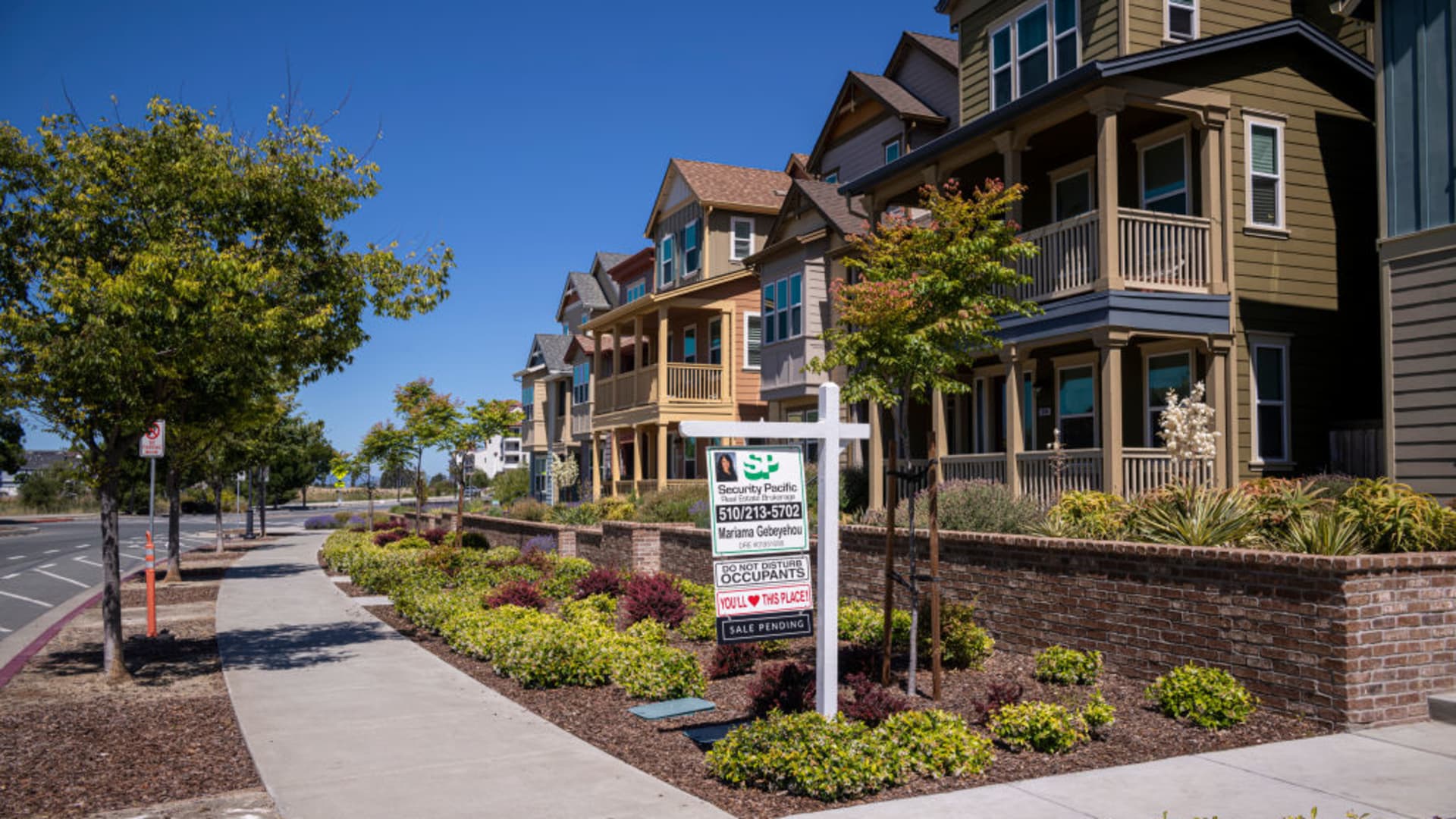
As temporarily as loan charges are emerging, the as soon as red-hot housing marketplace is cooling off. House costs are nonetheless traditionally top, however there’s worry now that they’re going to ease up as smartly.
All of this has other people asking: Is nowadays’s housing marketplace in the similar catch 22 situation that it was once over a decade in the past, when the 2007-08 crash led to the Nice Recession?
The fast resolution is: no. The us’s housing marketplace is in a ways higher well being nowadays. That is thank you, partially, to new lending laws that resulted from that meltdown. The ones regulations put nowadays’s debtors on a ways less assailable footing.
For the 53.5 million first lien house mortgages in The us nowadays, the typical borrower FICO credits rating is a report top 751. It was once 699 in 2010, two years after the monetary sector’s meltdown. Lenders had been a lot more strict about lending, a lot of that mirrored in credits high quality.
House costs have soared, as smartly, because of pandemic-fueled call for during the last two years. That provides nowadays’s house owners report quantities of house fairness. So-called tappable fairness, which is the amount of money a borrower can take out in their house whilst nonetheless leaving 20% fairness on paper, hit a report top of $11 trillion jointly this yr, in line with Black Knight, a loan era and information supplier. That is a 34% build up from a yr in the past.
On the identical time, leverage, which is how a lot debt the home-owner has in opposition to the house’s worth, has fallen dramatically.
General loan debt in the USA is now not up to 43% of present house values, the bottom on report. Damaging fairness, which is when a borrower owes extra at the mortgage than the house is price, is just about nonexistent. Evaluate that to the greater than 1 in 4 debtors who had been below water in 2011. Simply 2.5% of debtors have not up to 10% fairness of their properties. All of this gives an enormous cushion will have to house costs in truth fall.
No longer as many dangerous loans
There are lately 2.5 million adjustable-rate mortgages, or ARMs, exceptional nowadays, or about 8% of lively mortgages. That’s the lowest quantity on report. ARMs will also be fastened, most often for phrases of 5, seven or 10 years.
In 2007, simply ahead of the housing marketplace crash, there have been 13.1 million ARMs, representing 36% of all mortgages. Again then, the underwriting on the ones varieties of loans was once sketchy, to mention the least, however new laws following the housing crash modified the principles.
ARMs nowadays aren’t handiest underwritten to their absolutely listed rate of interest, however greater than 80% of nowadays’s ARM originations additionally function below a set price for the primary seven to ten years.
A “For Sale” outdoor a area in Hercules, California, US, on Tuesday, Would possibly 31, 2022. Homebuyers are going through a worsening affordability scenario with loan charges soaring across the best ranges in additional than a decade.
David Paul Morris | Bloomberg | Getty Pictures
As of late, 1.4 million ARMs are lately going through upper price resets, so given upper charges, the ones debtors should make upper per 30 days bills. This is surely a possibility. However, in 2007, about 10 million ARMs had been going through upper resets.
Loan delinquencies are low
Loan delinquencies are actually at a report low, with just below 3% of mortgages overdue. Even with the pointy soar in delinquencies all through the primary yr of the pandemic, there are fewer past-due mortgages than there have been ahead of the pandemic. Pandemic-related loan forbearance techniques helped thousands and thousands of debtors recuperate, however there are nonetheless 645,000 debtors in the ones techniques.
“The loan marketplace is on very traditionally robust footing,” mentioned Andy Walden, vp of endeavor analysis at Black Knight. “Even the thousands and thousands of house owners who availed themselves of forbearance all through the pandemic have by way of and massive been appearing smartly since leaving their plans.”
There are, alternatively, about 300,000 debtors who’ve exhausted pandemic-related forbearance techniques and are nonetheless antisocial. As well as, whilst loan delinquencies are nonetheless traditionally low, they’ve been trending upper in recent times, particularly for newer mortgage originations.
“We’re going to wish to control this inhabitants shifting ahead,” Walden mentioned.
Loan credits availability is easily beneath the place it was once simply ahead of the pandemic, in line with the Loan Bankers Affiliation, suggesting still-tight requirements. However lenders have misplaced about part their trade since charges started emerging, and that might imply they turn into extra competitive in lending to much less credit-worthy debtors.
The most important drawback within the housing marketplace now’s house affordability, which is at a report low in a minimum of 44 main markets, in line with Black Knight. Whilst stock is beginning to upward push, it’s nonetheless about part of pre-pandemic ranges.
“Emerging stock will ultimately cool house worth enlargement, however the double-digit tempo has proven outstanding sticking energy thus far,” mentioned Danielle Hale, leader economist at Realtor.com. “As upper housing prices start to max out some patrons’ budgets, those that stay available in the market can stay up for reasonably much less aggressive prerequisites later within the yr.”
